In search of
Kuladevathai ‘Tanjamma’
-A true story-
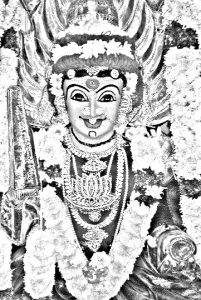
Written by :Santhipriya
On 22nd Feb 2019 a lady named Mrs. Charu left the following comment in my website in my article “Kulatheivam or Tutelary and family deities-8” .
Quote:
I came to know that my Kuladevathai is Thanjamma, vanadurgai, a form of Mahalakshmi. But I am not able to find out in which part of Tamilnadu she is worshiped like this, and if there is a temple for her, or is she called in this name as a consort to any main deity in a particular temple.
:Unquote
Immediately I replied to her stating that I have not heard of such a deity and only know Vanadurgai in Kathiramangalam near Kumbakonam in Tamilnadu, and wanted to know the source from whom she received the information {I have heard that those whose Kulatheivam (Tutelary deity) is unknown, they temporarily worship Goddess Kathiramangalam Vanadurgai and she will in due course of time help the worshiper to identify their real deity. Also some adapt Lord Tirupathi Venkatachalapathi as temporary Kulatheivam till they find out their real deity to be worshiped}. I further requested that if she can send me a photo of the deity, then I will be able to find out the details. Thereafter I immediately began searching in google and certain specific websites, to trace the details of Thanjamma and found only two references – one in Andhra Pradesh and another Tiruvannamalai, but unfortunately not even few lines of briefs were available on the said devi in the web.
Before I could communicate details to her, I received another message from the same lady stating that she was able to identify her Kulatheivam in a mystic manner which is narrated in her mail. It goose bumped when I heard it from her, though I firmly believe that the Kulatheivam identify themselves at appropriate time to those searching them. The gist of her mail was:
- Centuries back predecessors of her in-law’s who ran to safety on account of the tortures of invading Mughal rulers, settled in a place near Karnataka and adapted Lord Tirupathi Venkatachalapathy as Kulatheivam and worshiped him temporarily since they did not know who their Kulatheivam was (Tutelary deity), but many decades later they found out that their Kulatheivam was indeed ‘Aiyanar’ though the exact location of the temple where he is seated is eluding them till now.
- Prior to migration from their ancestral village, their ancestors were performing annual pooja called ‘Swamy Samarathanai’. (An annual ritual called Samarathanai used to be performed as thanks giving ceremony to the divines after return from long tours or voyages or pilgrimages and especially after return from pilgrimage to Tirupathi Lord Venkateswara temple or Badrinath, Kedarnath, Kasi and Rameswaram). The lady’s ancestors were performing this ritual annually to appease a Grama devathai (village goddess) called ‘Goddess Padavattlamma’ (name of female goddess) who was also Kuladevathai to them.
- In addition to the annual pooja to ‘Goddess Padavattlamma’, for few decades they have also performed Pooja to one more Grama devathai called ‘Goddess Thanjamma’ who appeared before them during their exile in forest, and then for reasons unknown till date to the successive generation, they have discontinued it abruptly and also demolished the shrine built by them. The reason for the temporary worship is narrated in the mail of the lady who was searching for her temple. The abrupt discontinuation of the pooja breaking the promise given to Grama Devathai ‘Tanjamma’ perhaps earned the wrath of her which led to several forms of sufferings faced in their family.
- While the above relates to her in-laws side, in respect of her father’s side, their predecessors too who ran to safety on account of the tortures of invading Mughal rulers, and settled in the same place near Karnataka, were also worshiping Lord Tirupathi Venkatachalapathi as Kulatheivam temporarily as their Kulatheivam was not known to them, but many years later they too succeeded in identifying their Kulatheivam as Lord ‘Srinivasa Peruman’ in a village near their original village from where they were driven away. Their Kuladevathai was ‘Goddess’ Mariamman in their original village.
- Whom she was searching was indeed not her Kuladeivam, but it was only Kuladevathai Thanjamma who is next in line to their Kuladeivam Aiyanar and do not enjoin the status of Kuladeivam.
Read the interesting story of the lady who managed to find our her Kulatheivam in strange manner which is fascinating. ‘I have reproduced original version of the lady as contained in the mail sent to me, except minor editing to change the names and places of stay. Wherever necessarily I have given clarifications in brackets in colour and rearranged paras in the mail for clarity and continuity in reading. For reasons of ‘Privacy’, her original name and other details of her family have also been withheld throughout in this article..… Santhipriya
In search of Kuladevathai
– True experience of a lady –
”Sir,
Namaskaram!
We belong to the Iyer (Brahmins) sect. We resided in group of villages given by the then Maharajah of Mysore to the Hindu Brahmins. These villages are around Mulabagal. Those Brahmins who were tortured and driven away from their native lands during Muslim invasion even before the Britishers entered India, fled from their Agraharams (an area where only Brahmins resided) and Gramams (Villages) and along with their families ran through the forests to safeguard their lives. Most of those who fled and ran into the forests to save their lives lost their way and somehow landed in other places and sought shelter. They were afraid of going back to their villages and even forgot their native villages in despair. People thus driven away from various places lke Kancheepuram, Vellore, North and South Arcot, Erode, Karur, Thanjavur etc formed groups based on their gotrams* and each group members settled as one block in the villages given by the then ruler Mysore Maharaja. (*The Gotra is something like a surname carried by the clan of the entire family and their descendants, in an unbroken male line beginning from the Root person who was one of the seven Rishis created when the cosmic was born. Thus when a person says that he belongs to the Bharadwaj Gotra then he traces back his male ancestry to the ancient Sage Bharadwaj who is the Root person of that Gotra. The fleet of several Gotras as seen today, carrying several names are the off shoots from the main seven Gotras representing the seven ancient Rishis. So Gotra refers to the root person in a person’s male lineage). Thereafter everyone unanimously adopted Lord Tirumala Srinivasa as their Kulatheivam (Tutelary deity) thereafter. As years passed, the future generations had no idea of their native Gramam, Kulatheivam and Kuladevathai, rituals etc. Migration to cities further erased knowledge on them.

All said and done, life went on and there were unending woes in the families of their descendants. They suffered from strange diseases, there was no unity among the family members, affection was unknown, there was long delay in marriages, most marriages broke etc. etc. Most of them could not reap the benefits of their education, talent and ended up as losers. Of late when people approached astrologers or Gurus to seek remedies for their sufferings, they are advised to worship their Kulatheivam. They said, Kuladeivam/ Kuladevathais are none but our own predecessors to whose clan we belong. They are our saviors. We should never ignore them for they cannot protect us if we cut off from them. They are the tap root of our family tree. No other deity is authorized to grant welfare to us without the assent of our own Kuladeivam/Kuladevathai. No amount of poojai, homams, yagams, yagnams will be fruitful if Kuladeivam/Kuladevathai is ignored. Worshiping Ishta devathas will give only some temporary relief.
Kanchi Maha periyava has specifically explained this concept. He has said ‘Praying, doing pujas, performing any number of homas, and Yagna to any number of Gods, any number of times ignoring Kulatheivam and Pithrus (ancestors who are dead) will give only slight effect because no God can grant us welfare without the permission of our Kulatheivam and Pithrus. Only our Kulatheivam and Pithrus are authorized to grant us welfare. So it is most important to appease them. Cutting off from Kulatheivam and Pithrus is like a tree cutting off its main roots. It can never absorb nutrition efficiently/sufficiently anymore. Same is family tree. Doing so many things instead is like sprinkling a little water which will give some temporary refreshment.’
Again talking about Kulatheivam he says ‘Kulatheivam will usually be a deity worshiped in ones own village or gramam (hamlets) even before the advent of Agamic Gods and Goddesses. Many a times it is a Grama devathai or Gramadevatha (village goddess or god) in the form of Demigods’. Though surprising this is true.
My husband’s family is suffering from big doshams (ill effect of sins) since three generations. Astrologers were of the view that it is due to Kuladeiva shapam (curse). They neither know their native poorvikam (line of past ancestors) or their Kulatheivam. For the past 40 yrs. I have been searching for clues to find our Kuladevatha/Kuladevathai. One elderly person had advised me to light an extra ghee lamp dedicated to the unknown Kuladeivam/Kuladevathai everyday during pujai and pray as ” O God, whom so ever it maybe please accept my prayers and protect my family. Please reveal your identity and bless us.” This I have been religiously doing. Later I came to know that our ancestors migrated from Kanchi, Vellore, North/South Arcot, and surrounding areas and that they might probably be the natives of Gundur, Kamundam etc.
After years of rigorous prayers, by the arul (grace) of Mahaperiyava, last year I could find out that their Kulatheivam was ‘Aiyanar’ (She means her husband’s side. Once married, the wife become part of her husband’s family in all respects and therefore her link with even deities stand altered to that of husband’s family) but the place is yet to be found. It must be Yattahalli because my husband’s great grand father’s name begins with Yattahalli ( a village in Krishnagiri District) as found in the gazette. Severe efforts and sieving Krishnagiri Districts did not help us to find Yattahalli. Nobody has idea about Yattahalli. Right now we are worshiping Aiyanar at Kanchi Kamakshi Temple as advised by Bala periyava. The next step is about a Grama Devathai Thanjamma who had especially appeared to their ancestors to whom puja had to be performed every year. She is Mahalakshmi swaroopam (one of the forms of Mahalakshmi). This deity’s puja is specific to this family. I am searching for Her.
Yesterday I had asked you about Thanjamma. It was very kind of you to offer help. Today morning after prayers, my instinct evoked me to browse Thanjamma again. Every time I used to do this a blog about ‘Thanjamma Garage, Bangalore’ appeared. It flashed to me why can’t I call this number and try for any details if available by the grace of Mahaperiyava. After all nobody will choose a name just like that. There must be something linked to them. A Gentleman answered my call and I explained my query. He handed over the call to his mother. The Lady told me that Thanjamma was their Kulatheivam. Thanjamma’s Temple is in Adukkamporai (name of the village) in Vellore. She is a very powerful Kanniswami (virgin lady) and Kuladevathai to many natives of that area. As I wrote earlier may be these people migrated from that area. Today is my lucky day! I consulted an elderly priest and learnt the Agamic (religious tradition) way of offering puja to her.
Last year when we were searching for Aiyanar Temple in Tanjavur, it was very surprising that many people were searching their Kulatheivam in their native gramams. Originally all the people including Brahmins worshiped their grama devathas without fail. Later they migrated to cities and forgot to worship her/him and suffered the wrath. Many of them are getting back and starting to worship Her/him and their lives are taking a U turn towards wellness. Strange but true. The advent of Agamic Gods is also a reason.
It is really very kind of you to show concern on me. Through one of Mahaperiyava devotee I got the phone number of a gentleman in Palakkad (a city in Kerala) who is an Astrologer to Kanchi Madam. He also sees Prashanam (a mystic art of reading past and/or likely future events). He is very difficult to approach. Though I did not go there, somehow by the grace of Mahaperiyava, he gave consultation over the phone and told me that our Kulatheivam is Aiyanar. When I asked him the place he asked me to go to Alangudi (name of a village in Tamilnadu) first, pray there and then find Aiyanar temple around. The clues he gave were Aiyanar, Poornai, Pushkalai, Dharma Shasta (names of temples) temples beside a famous Perumal temple in Kumbakonam.
Until this time I didn’t even know there was a God named Aiyanar. After browsing a lot I came to know that Aiyanar is one of the most ancient popular Kulatheivam to all the people including Brahmins in the Deccan plateau even before the invention of the Agamic Gods and Goddesses. He had eight avatars and Aiyapan is one of them. He has also varied names in various places. I could not find the particular temple because there are many Ayyanaar temples around and quite some of them were beside a Perumal temple. There was a tiny Aiyanar temple at the entrance of Alangudi temple and we offered pujai there. People in these places address both Lord Narayana and Lord Shiva as Perumal and this makes it too confusing. We now offer pujai to Aiyanar at Kanchi Kamakshi temple as we could not find the particular temple where we are supposed to worship.
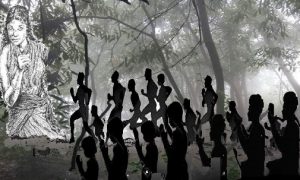
Apart from this we were told that we hold the wrath of a particular Grama Devathai for breaking the promise to worship her. Now this became a challenge to find out. I had to struggle hard and collect some old books written by persons who also lived in our village near Karnataka. In that I read that the people of my husband’s village were suffering a lot in family matters. One day a group of men from the village went far away to see a learned person and seek a solution. When they returned to the village, almost nearby in dense forest, they gave up due to severe fatigue and sat under a tree. It was dusk. A lady in a white sari and red border appeared before them. When they questioned her identity, she told them that her name was Thanjamma and if they promise to worship her hereafter, she will grant welfare to their families. She is a Kanni Vanadevathai (Virgin demi goddess in forest) and cannot withstand the sound of Olakkai and Oral (pestle and mortar). The men promised to do so and installed a Shilai (a small rectangular pillar or stone without any image partially buried in earth) in the place where she appeared. People started worshiping her. Welfare resumed. Later due to internal differences in the gramam the temple was demolished and the shilai thrown away. We are in search of Thanjamma temple elsewhere to resume worship.
At first we were surprised that how a Grama devatha can be Brahmin’s Kulatheivam. The priests of the main temple explained to us that before the advent of Agamic Gods all the people worshiped their respective Grama Devathas/Grama Devathai as Kulatheivam/Kuladevathai. Of late many Brahmins are realizing this and are resuming puja is to them. As His holiness Kanchi Mahaperiyava says Kulatheivam/Kuladevathai is always a Demi God found in our own native villages.
I visited the Thanjamma temple at Adukkamporai, Vellore two days back. There is only a Shilai and no idol. Lo! Thanjamma here wears only white sari with red border. The priest told us there are quite some Thanjamma temples in Vellore area and also Tamilnadu border. She is the Grama Kuladevathai to many people including Brahmins. The Silai we saw was hardly one foot tall. Only a elliptic (oblong boulder or flat rocky stone without firm edges) stone. The divine energy radiated was strong.The priest asked us not to click pictures as the Goddess is very much moving around at peak noon, the time we were there. A white sari (strictly cotton she accepts) with red border was wound around the Silai. There were two huge horses on either sides. A Lady riding one and a man riding another. They had weapons in their hands. Before them there were Vemmuni and Semmuni (names of two warriors or solders) seated. Yes there are quite some Thanjamma temples in Vellore and Chittoor districts.
But it is my great luck that I could get a photo (sent by me). I will take a print out and perform pujai as specified for Brahmins. I have no words to thank you. All these are appearing now on screen. All these years there was no trace of them! (may be because she must have continued to google for Thanjamma instead of Tanjamma) In one particular era especially during Muslim invasions, our people scattered hither and thither in search of shelter.
There is a strange story about my father’s family. Twelve generations ago they were basically Iyengars (Vaishnava sect in Hinduism) in the village they lived. They were tortured and driven away by the Muslim rulers. They escaped into the forests in groups and landed in a unknown gramam near Mulbagal (name of a village) and pleaded for food only to be refused because it was a smartha village and there was no place for Vaishnavites. Those were days of smartha (Shaiva sect in Hinduism) and Vaishnava one up man ship wars too. They at once rubbed off their namams (a red or yellow line mark of vaishnavites on forehead) and put vibhuti pattais (three parallel lines one below the other or one line mark with ashes on the forehead of Shaivites) and had lunch. Later they continued as smarthas. They adopted Tirumala Balaji as Kulatheivam. Later after long time sufferings they found out their original Kulatheivam and got relief.
There is another ritual performed by those who lived in our villages. They perform ‘Swami samaradhanai’ (a religious ritual or kind of pooja) in the name of ‘Padavattlamma‘(name of female goddess) a corrupt pronunciation of ‘Padai vettia Amman’ (name of female goddess meaning the goddess who slaughtered the army of solders) none other than Renuka Yellamma (name of female goddess) at Polur, Vellore.She must have been our Kuladevathai. The story goes like this. Once a Muslim invader attacked the ruler of Vellore/Polur by wrong means. The King being an ardent devotee of Renuka Yellamma fled for life with his family and hid in her temple. The Muslim soldiers came to know about this and followed him to the temple. It was dusk. When the soldiers tried to enter the temple an aged widow stood there in protection with a sword and beheaded each soldier of the army. The King and his family had fallen asleep in the temple. Next morning people found heaps of Muslim soldiers’ heads. This is another small proof that they hailed from Vellore area. A few who escaped related the story. The Widow was nowhere to be seen. From then then on the Goddess at this temple came to be known as ‘Padai vettiya amman’.
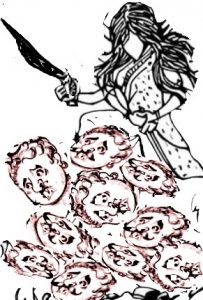
During Swamy samaradhanai a widow in a white sari is also seated. But she is fed with bland curd rice only unlike the other five sumangalis (married women whose husbands were alive) and one kanya muthhaidai (unmarried virgin girl) fed with an elaborate feast.
My elder sister was given away in marriage to North Arcot. Her husband’s family Kuladevathai was Choundhamma also Lakshmi avatar (names of two goddesses)! My sister in law’s husband’s family deity is a fisher woman Goddess. As Mahaperiyava says Kuladevathai or Kulatheivam cannot be any famous Agamic God or Goddess. He or she has to be an ancestral deity in our own ancestral gramam. These facts are strange but true!!!
Thank you
-Mrs. Charu-“
:End view:
The narration in the story of the lady strengthens the belief on an important aspect. In ancient times, there was no division as Vaishnavites and Shaivites while worshiping the Village deities. Irrespective of the caste, division or sect, every one resided in a Village have worshiped the same deity in their Villages prior to the emergence of Vedic divines. The same village Gods or Goddesses have also been adapted as Kulatheivam and worshiped uniformly by one and all. The entire fleet of Kuladevathai or Kuladevatha possess the same divine powers as possessed by the Agamic divines.
Those female Village deities whose names ended with Amma such as Thayamma, Thanjamma, Maayamma, Renuka Amma, Yellamma, Gangamma and Gangaiyamma etc are none but Goddess Mariyamman in different incarnations or forms who emanated from the power rays of Goddess Parvathi. Therefore Thanjamma too is an incarnate of Goddess Mariamman. Even Goddess Lakshmi too is incarnation from Goddess Parvathi.
There exist wrong notion in the minds of people on how many Kulatheivam can be there per family. There need be no doubt in the minds of one on Kulatheivam, as each family and their decedents will have only one Kulatheivam, who heads the family and their decedents in an unbroken male line and Brahman has assigned the task of guiding and safeguarding them.
At the same time, in ancient periods of time, some of the families and their decedents who continued to reside only in the villages called gramam, have offered annual prayers and Pooja to the prime female village deity of the same village called Grama Devathai who was treated as their secondary Kulatheivam in all aspects. If their Kulatheivam happened to be female, then they would adapt a male devatha as secondary Kulatheivam. The reasons are not known but the practice was also not wide spread and noticed only in some places in states like Karnataka and Andhra Pradesh. Therefore some of the families generally claim their Kulatheivam as so, and so and Kuladevathai as so and so, and continue to give equal treatment to both as far as worship and offer of Pooja is concerned.
In addition to Kulatheivam and Kuladevathai, an annual ritual called ‘Sumangali prarthanai’ used to be performed to the in-house deities called Graha Devathai. The Graha devathai were virgin girls and/or female members who died before their marriage, and the married ladies who departed before their husband’s demise, both in the same family as they are believed to become celestial after death. Pleased with the Pooja and prayers of their family members, the celestial turned females of the family, called Graha devathai in turn bless the family members for prosperity. In addition the Graha devathais ward off the doshams of their family members by offering prayers in invisible form to the Kulatheivam and other Agamic divines in the celestial world so goes the belief.
Perhaps because of these facts the lady has mentioned that Aiyanar was the Kulatheivam of her in law’s and their Kuladevathai as Padavattlamma besides short period worshiped Thanjamma as their Kuladevathai. In respect of her father’s side, Lord Srinivasa Peruman is their Kulatheivam while Mariamman is their Kuladevathai.
All the village deities called Grama Devatha or Grama Devathai are manifestations from Agamic divines manifested in various places and various periods of time for some cause and since they manifested in the villages they earned the name Grama Devatha or Grama Devathai. Therefore those who worship Village deities as their Kulatheivam must wholeheartedly realize and accept that the Village deities called Grama Devatha or Grama Devathai are in no way inferior to the Agamic divines in any manner……Santhipriya

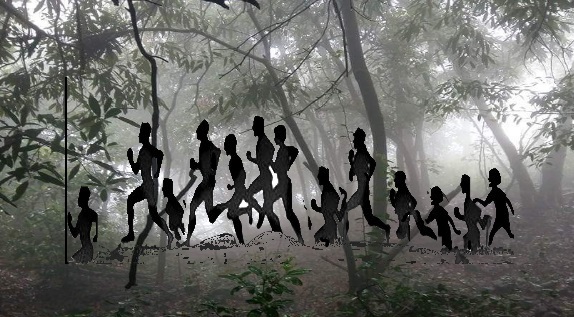

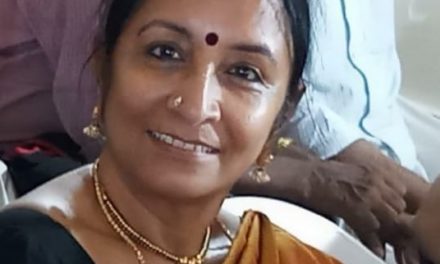
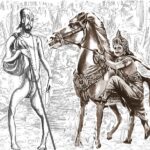
Dear sir,
I am Santhanakrishnan, from thanjavur. We are searching our kuladeivam.
In the above information, mentioned about kanchi mutt astrologer, is there any chances to get his number.
I am extremely sorry sir, I do not have.
Oh OK sir.
Actually we are having some clues with the help of that we are searching. we’re from North (from the bank of river narmada) and we moved to old north arcot 6 generation before. And our kuladeivam is ambal (Amman). It will be in outer boundary of the village (may be in dense agri land or may be open land like these). Nithya poojas are rarely doing by poosaris. That diety is for the whole in and around villages and all people gathered to do worship. Clues like these we are having but unfortunately we don’t know the exact location and name of goddess…
Hi sir, how could we find Thanjamma details to know Kuladevatha. Please help.
Sir, I am Vikram in search of my Kuladeivam,
My grandfather name is Vellore Pandurangam Mudaliar ( then station master of Katpadi junction in 1940s). My Great greatgrandfather name is Kuppuswamy Mudaliar. Please help me.
No idea sir. Only your ancestors may have to tell. If they are also not able to tell, please see my article on Kulatheivam to find out your Kulatheivam.
Hello
There is a temple at திருப்பட்டூர், வேலூர் district. It maintained by பிள்ளைமார் community. You can check there more.
Dear Sir,
My name is Bhuvaneshwari Karthik.My elder brother is Nataraj Mudaliar .This is not his surname .Sad story of past revealed that our grandfather from paternal side was Padmanabhan Naidu .He was telegu .My father was raised as an orphan .We prayed in our house to Lord Balaji ,Lord Ganesh , Goddess Lakshmi and Saraswati.I am married to an Iyer family and know our family dirty is Mathura Kali Amman.My brother ‘s side of family has suffered a lot of misfortune, no happiness .Request if you can assist in helping us on how to go about finding family diety .Grandfather was from Tanjavur .Naidu.Nothing else known .Thanks.
Hi sir,
My name is Karthik mudaliyar am in search of my kuladeviam they sayb it’s tanjamma n some pachiaamman am confused can u pls help
I am sorry sir. By caste or one’s name the Kuladeivam can not be found. Please follow my article how to find out the Kulatheivam in the same website.
Our kuladeivam is also thanjammal . I want to know more that like who she was and what she did. If anyone knows do reply 🙂
Sir
Thanks, nothing beyond what I wrote is available with me. Only the temple pundit can explain you. By the way may I know which Tanjamma temple is your Kula theivam? Where is it located?
It is located in village called Athiyur, Vellore. Very small temple. Along with tanjamma, Grahma devathai called selliamma also there. Both tanjamma and selliamma are said to be sisters.
Thanks
Dear Mr. Nithish
Greetings to you.
Our am trying to find my kuladevadata Tanjammal temple. So far we have not found her temple since last 50 years. In our family no one visited there. I heard about our kuladevadata temple is in Hyderabad. We are from Gavara naidu community. Is there any possibility to both temple or same?My contact number is 9751405253.My name is Kumar.
Let me know your contact details to interact with you about Tanjammal.